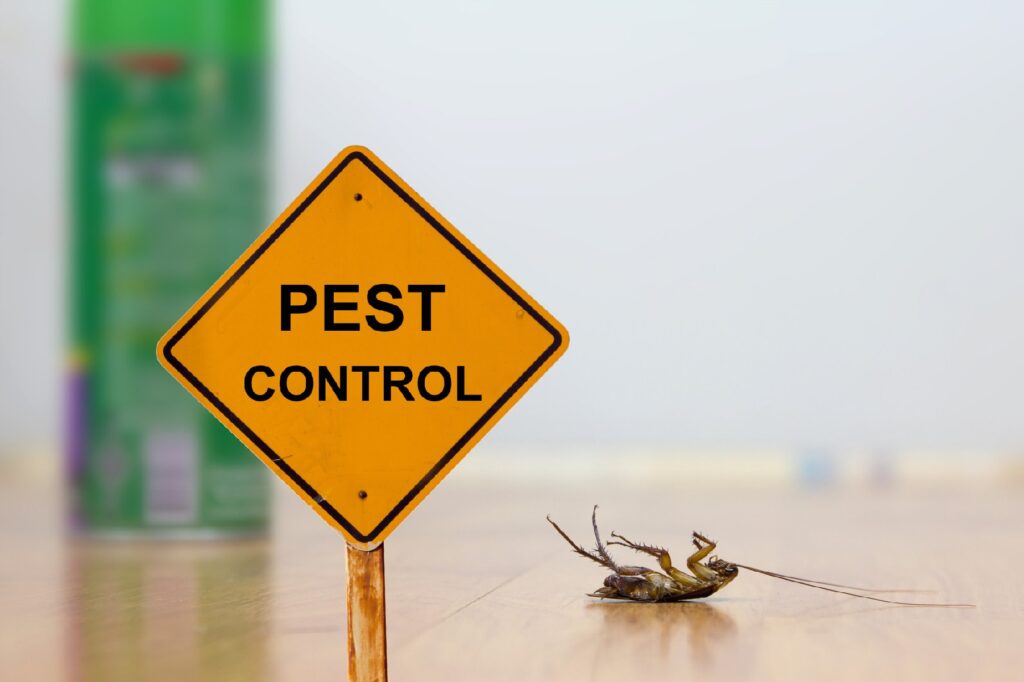A Comprehensive Guide to the Different Kinds Of Insect Control Approaches
With the myriad of parasite control methods offered, it can be overwhelming to find the most efficient service for a certain insect issue. In this thorough guide, we will certainly check out these different types of bug control techniques, using understandings right into their applications and benefits. By the end, you will certainly have a more clear understanding of which technique may be the ideal fit for your parasite control requirements.
Chemical Bug Control Approaches

One common type of chemical parasite control is pesticides. Insecticides are chemical substances that are especially created to kill or push back pests. They can be applied in different forms, such as sprays, baits, or dusts. Insecticides target specific bugs, such as mosquitoes, termites, or ants, and can be made use of both inside your home and outdoors.
One more sort of chemical parasite control is rodenticides. These are chemical compounds made to control populations of rodents, such as rats and mice. Rodenticides are typically utilized in lure type, which brings in the rodents and then kills them after consumption. They are commonly utilized in agricultural settings, as well as in property and industrial buildings (Customized pest control solutions Chicago).
Weed killers, also known as herbicides, are one more sort of chemical parasite control approach. Herbicides are designed to selectively eliminate undesirable plants, called weeds, without creating injury to desirable plants. They are commonly made use of in agriculture, landscaping, and horticulture to manage the growth of undesirable plant life.
While chemical insect control approaches can be extremely effective in removing pests, it is vital to use them judiciously and adhere to safety standards. Overuse or abuse of chemical pesticides can have negative influence on human health and the environment. It is important to utilize these techniques responsibly and consider alternative pest control strategies whenever feasible.
Organic Insect Control Techniques
Organic insect control methods include using living microorganisms or natural materials to take care of and regulate pest populations. Unlike chemical approaches, which typically rely on artificial chemicals, organic control techniques use the natural enemies of pests to control their populations. This strategy is taken into consideration more eco-friendly and lasting, as it decreases the usage of harmful chemicals and minimizes the threat of pesticide resistance.
One extensively made use of organic bug control technique is the intro of all-natural predators or bloodsuckers. Ladybugs are presented to control aphids, while particular wasp species are launched to target caterpillars. These predators and parasites feed on bugs, lowering their numbers and stopping invasions.
Another biological control method is the usage of pathogens. Certain microorganisms, viruses, and fungis can be used to infect and eliminate particular insects. For circumstances, the germs Bacillus thuringiensis is frequently made use of to control caterpillars, as it produces toxic substances that are deadly to these insects.
Biological control methods can additionally entail using scents or natural materials that interfere with the mating patterns of bugs. By hindering their recreation, these methods help to reduce pest populations over time.
While organic insect control approaches are generally effective, they may require longer periods to accomplish preferred results compared to chemical methods. In addition, careful factor to consider has to be provided to the choice and launch of natural enemies to avoid unintended injury to beneficial microorganisms or communities.
Physical Parasite Control Methods
To efficiently manage and control pest populaces, different parasite control methods known as physical bug control methods are employed. These methods entail making use of physical barriers, catches, or tools to avoid pests from accessing or damaging residential property. One typical physical parasite control approach is the use of displays or nets to keep insects out of structures or gardens. These screens are generally made from fine mesh material that enables air flow while protecting against pests from entering. One more physical pest control technique is the setup of fencings or wall surfaces to maintain bigger bugs, such as deer or rabbits, out of gardens or farming fields. These obstacles literally block the insects' access to the area, minimizing the possibility for damages. Additionally, traps and devices can be used to capture or fend off bugs. Sticky catches can be put in areas where bugs are an issue, and the pests end up being stuck to the adhesive surface area. Ultrasonic gadgets can also be used to discharge high-frequency noises that are unpleasant to bugs, triggering them to leave the location. Physical bug control methods are an environmentally pleasant option to chemical pesticides, as they do not rely upon making use of harmful chemicals.
All-natural Bug Control Approaches
Natural insect control techniques use a sustainable and environment-friendly strategy to handling and removing pests. These methods prioritize using natural substances and organic agents, reducing the need for chemical pesticides that can hurt the setting and human health. Among the most common all-natural pest control techniques is organic control. This involves presenting natural killers or parasites to victimize or parasitize the insects. Ladybugs are typically introduced to gardens to regulate aphid populaces. One more all-natural approach is the use of repellents originated from plants. Specific plants, such as marigolds, lavender, and pepper mint, send out scents that drive away pests like mosquitoes, flies, and ants. In addition, social control practices can be used to stop and handle bug infestations. This consists of proper sanitation, my link regular upkeep, and promoting biodiversity in the garden. For example, turning crops, eliminating garden debris, and encouraging natural killers can help avoid the accumulation of bugs. By adopting these natural this link pest control techniques, individuals and neighborhoods can efficiently handle insects while lessening the unfavorable effects on the atmosphere and human health and wellness.
Integrated Insect Management (IPM)
Integrated Parasite Management (IPM) is a thorough and organized method to pest control that integrates various techniques and techniques to efficiently manage insects while decreasing making use of chemical pesticides. IPM aims to preserve bug populations listed below the financial injury level by making use of a mix of cultural, biological, and chemical control approaches.
Cultural control methods include changing the environment to make it less beneficial for bugs. This can consist of techniques such as plant rotation, proper cleanliness, and using resistant plant selections. By developing unfavorable problems for insects, social control techniques can substantially minimize insect populaces.

Chemical control approaches are made use of as a last resort in IPM. They involve the targeted and judicious use pesticides to manage pest populaces. Unlike standard bug control techniques, IPM aims to minimize using chemical pesticides by utilizing different methods.
Integrated Insect Management (IPM) is an aggressive method that concentrates on lasting insect monitoring instead than relying only on reactive measures. By incorporating multiple control approaches, IPM offers an extra sustainable and ecologically pleasant technique to pest control.
Final Thought
In conclusion, this article has given a thorough review of the different kinds of pest control techniques. It discussed chemical, organic, physical, and natural bug control approaches, in addition to the incorporated bug management strategy. By recognizing these different methods, people can make informed choices on which insect control approach is most appropriate for their specific demands and choices. Efficient pest control is important in preserving a healthy and pest-free environment.